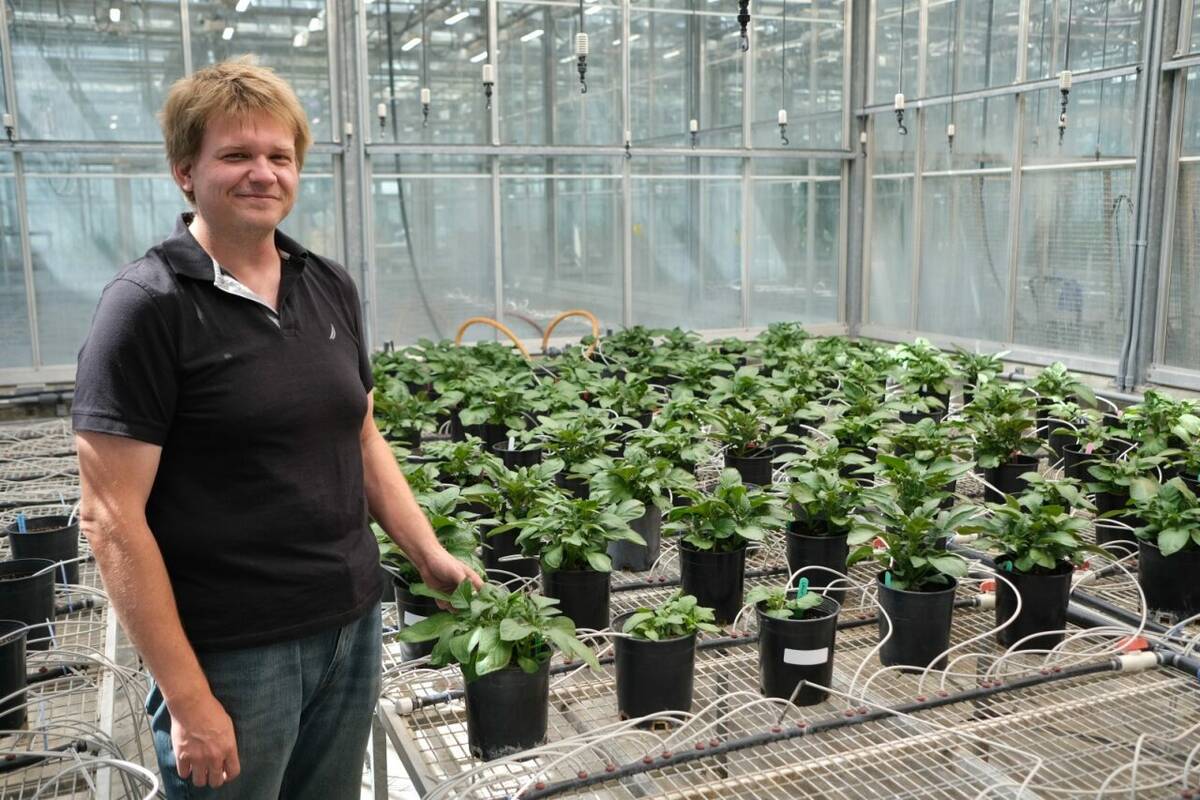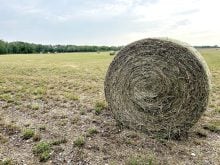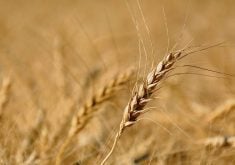Western Canadian flax growers have a new herbicide called Authority, to control Group 2-resistant kochia.
But there’s lots for farmers to consider before using Nufarm’s new pre-emergence product with residual weed control. Soil pH, organic matter and texture will affect the application rate and in some cases prevent its use.
And there are recropping restrictions, including a 24-month wait from the time Authority has been applied in a field before canola can be seeded.
“It (Authority) will be a really good addition to our arsenal for controlling weeds in flax,” Anastasia Kubinec, Manitoba Agriculture, Food and Rural Initiatives’ oilseed specialist, told the Manitoba Flax Growers Association’s annual meeting.
Read Also

Hail research hopes to benefit potato growers
Alberta research scientist measures hail storm and heat dome affects on potato crops
“This is a chemical that’s very powerful and you need to know what’s going on in your soil,” she said.
“I do recommend soil testing and finding out what the organic matter is and the pH and figuring out what the soil type is.”
Registration limits
Authority’s active ingredient is sulfentrazone. It’s also registered for use in sunflowers and field peas. In addition to kochia it controls red root pigweed, wild buckwheat and lamb’s quarters.
Authority was registered in 2009 for use in chickpeas in Saskatchewan.
The higher the soil pH, the more Authority is available to control weeds but the chance of crop damage increases too. As a result Authority is not recommended in soils with pH levels exceeding 7.8. The same holds in sandy textured soils.
The flipside is the lower the soil pH, the less Authority is available and weed control can suffer. The same is true in soils with high organic matter. Authority isn’t recommended in soils where organic matter exceeds six per cent, Kubinec said.
“I can’t emphasize this enough, you’ve got to soil test, you’ve got to know your farm as far as what your organic matter is, soil texture and critically what your pH is,” said Nufarm sales manager Myles Robinson. “Those things will determine the rate you use.”
Seed then apply
Farmers will get the best results from Authority if they seed first and then apply the herbicide, but they must do so within three days or risk injuring the newly germinating crop.
Farmers can also apply Authority and then seed, but where the soil is disturbed weeds could escape the herbicide.
“Anything we can do to minimize that soil disruption will be good for weed control,” Robinson said.
Unlike older pre-emergent herbicides, Authority shouldn’t be worked after it has been applied.
“The worst thing you can do is go over it with the harrows,” he said.
However, Authority does require a quarter-to a half-inch of rain to activate it.
Authority will work in fields with lots of crop residue so long as it’s evenly distributed and there’s rain to wash the herbicide into the soil, Robinson said.
It’s important to work down soil clumps too before applying Authority because they can contain weed seeds, he said.
The goal is to get the herbicide evenly spread across the field and then washed into the soil forming an even layer. The newly germinating susceptible weeds die after coming in contact with the herbicide, which inhibits an enzyme critical to photosynthesis.
Robinson recommends applying Authority with 10 gallons of water per acre to get the best coverage.
“Ten gallons (of water) covers a lot of mistakes,” he said.
Use carefully
In independent, replicated plots, Authority was found to control Kochia 100 per cent after 77 days. In fact, Authority is so effective on kochia, Nufarm wants farmers to use the herbicide in the same field only once every four years.
“If something controls kochia at the 100 per cent level we’re really selecting for kochia plants that are more tolerant,” he said.
“We want to manage this and avoid building up resistance.”
———
“Ican’temphasizethisenough,you’vegottosoiltest,you’vegottoknowyourfarmasfaraswhatyourorganicmatteris,soiltextureandcriticallywhatyourpHis.”
MYLES ROBINSON
NUFARM














